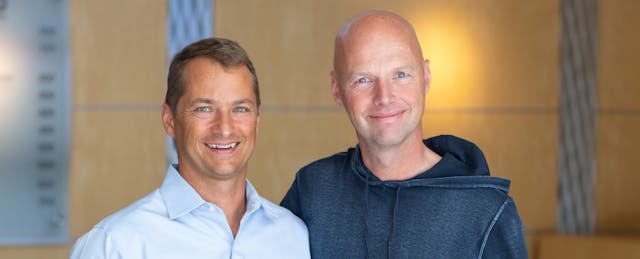Chief executive officers don’t grow on trees. But Udacity has finally found a new head in former LendingTree executive Gabriel Dalporto.
Today’s announcement marks the end of a CEO search that lasted nearly 10 months for the online education company that offers courses geared at helping people learn skills relevant to technology jobs.
Udacity is one of the few education technology companies that has gained unicorn status, meaning that it is valued at more than $1 billion. But it has recently suffered a rocky period that saw triple-digit layoffs.
Dalporto will fill a position that has been vacant since Vishal Makhijani stepped down in October 2018, after serving in that role since April 2016. (Makhjiani had been with the company since 2013.) In the interim, Udacity co-founder Sebastian Thrun returned to the company to oversee day-to-day operations and led its search for a new CEO.
For Dalporto, who grew up in West Virginia, Udacity’s mission to make technology training more accessible was something “near and dear to my heart,” he says in an interview. In his hometown, and many other former industrial regions across the country, “areas are being decimated by changes happening to people’s careers,” he notes. “Technology has changed what it means to have a successful career.”
During his eight years at LendingTree, a publicly traded online lender, Dalporto took on multiple executive roles, including chief marketing officer and chief financial officer. He sees parallels between his previous work and his current mission to help Udacity grow. At his old job, one of his first mandates was to build out the company’s marketing and growth team. At Udacity, he sees “a lot of room to grow as far as having a marketing team that can leverage paid media to acquire customers.”
Dalporto arrives at a time when the company says it has steadied the ship. The incoming CEO credits Thrun and Lalit Singh, Udacity’s chief operating officer, with “streamlining the team and process, and bringing in a culture of accountability and better communications and teamwork” over the past year. Today, the company has about 300 full-time employees across the world.
Priorities and Projections
Among the challenges that Dalporto pointed out was that Udacity had been sluggish in producing new “Nanodegree programs,” its term for courses that help prepare students for technology careers. Last year the company launched eight new programs, and “we’re on track to triple that number this year,” he said.
Udacity currently offers more than 30 Nanodegree programs, a number that Dalporto wants to grow quickly. “One of the key things we have to do is accelerate the rollout of our Nanodegrees,” he said.
Udacity officials say the company has been cashflow positive since June 2019, and they partly attribute that feat to a new subscription-based model where students pay a $399 monthly fee to take courses. The company positioned the change as a way to give students more flexibility in completing their programs (and lower costs for those who finish quickly). But for most students, the new model amounts to a price increase, as Class Central, a site that analyzes the online education market, has noted.
Dalporto also said that Udacity has enlisted more than 50 companies, including AT&T and Cisco, for its enterprise business that builds customized courses for employers looking to retrain their workers. Revenue from this line increased 150 percent in the first six months of 2019 over the previous period, the company claims.
The company said it generated about $90 million in overall revenue last year, but officials did not share details on what that figure could look like this year. (Dalporto said it was “premature” to talk about projections on his first day on the job.)
Sebastian Thrun will remain as the executive chairman of Udacity’s board and will remain involved in the company’s overall strategy.
Founded in 2011, Udacity has raised $160 million in venture capital. Should it need more, Dalporto says he’s ready. At LendingTree, he helped the company raise more than $300 million in convertible debt and secure another $125 million in a revolving credit line. He also oversaw five acquisitions during his time there.
That kind of experience could come in handy as Udacity starts thinking seriously about “getting ready for the public markets, inorganic growth [through acquisitions], or some other financing,” Dalporto said.
But, he added, any major move is unlikely to happen immediately. “I don’t think Udacity is quite ready for these things—probably not in the next 12 months at least.”


